An alcohol stove is really easy and fun to use. Nevertheless, every camping stove and all flammable substances should be handled with care, caution and common sense.
USING THE HITCHHIKER'S KITCHEN
cooking with an alcohol stove

Here are some safety tips :
fuels for alcohol stoves
Alcohol is the only suitable fuel for an alcohol strove !
The usage of petrol, gasoline, kerosene or other petroleum-derived liquids may result in serious injury and therefore these fuels should never be used in an alcohol stove !
There are different kinds of alcohol: ethanol (aka ethyl alcohol), isopropanol (aka isopropyl alcohol or rubbing alcohol) and methanol (aka methyl alcohol).
Alcohol stoves are best used with ethanol and ethanol based products.
Isopropanol will leave a lot of sooty and sticky residue, which clogs the stove.
Methanol is a hazardous chemical. Both are not recommended.
Ethanol (also know as grain alcohol, drinking alcohol, pure alcohol, Everclear, Prima Sprit or Weingeist) is naturally produced. It is a renewable resource and burns fairly clean. It can be used as an antiseptic or disinfectant. Alcohol used as a fuel should contain at least 70% ethanol (70% alc/vol or 140 proof). Lower concentrations are low-flammable and won't work.
Denatured alcohol (also known as methylated spirit, Alcool à brûler, Brennspirtus, Spiritus, Bioethanol, liquid fondue fuel or marine stove fuel) is mostly ethanol mixed with bitter substances and toxic chemicals. These additives render it undrinkable and discourage consumption. Because of the variability of contents, some brands burn better and with less residue than others. Depending on the poisonous chemicals used in the mixture the fumes are more or less hazardous to health! Therefore denatured alcohol should only be burned outdoors. It can be bought at most hardware stores.
Grain alcohol is a lot more expensive than denatured alcohol.
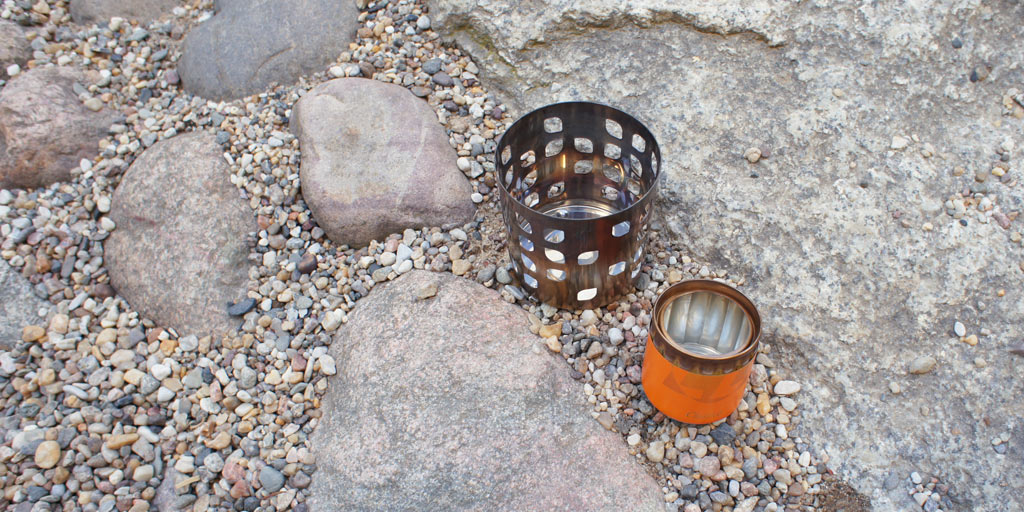
The stove should be placed on a non-flammable, flat and stable surface such as bedrock, gravel or sand. All flammable materials should be removed from the cooking area and spilled alcohol should be cleaned up before the stove is lit. When dry grass soaked in alcohol catches fire, it can turn into an uncontrollable blaze. Smoking in the camp kitchen is not advised!
A bucket or a bottle of water nearby as an emergency fire extinguisher is a good idea. The flame of an alcohol stove can't be blown out. Instead a puff makes the stove burn hotter. It is easier to let the stove burn out.
An alcohol stove should never be filled up to the brim. Three-quarters is the maximum capacity. Overfilling may cause overflowing. Liquid fuel may gush out of the stove and turn it into a fireball.

To start an alcohol stove a match is better than a lighter. Fill the alcohol stove with ethanol and place it inside the pot holder. Hold a burning match over the opening in the middle of the stove until the vapor catches fire. A little twig, dipped in alcohol, and then lit with a lighter works too.

Caution: In daylight the bluish flame of the stove is almost invisible!
In hot weather the alcohol starts to evaporate quickly. In these conditions the alcohol stove might start with a pop and a flare. During a drought, when hot temperatures have turned trees and undergrowth into tinder, and especially if the authorities have issued a forest fire warning, a camping stove should not be used. A sandwich tastes good too.
In cold weather an alcohol stove might not work as well or work at all. Then the alcohol needs to be prewarmed (do not preheat over a flame; use your body heat instead!). In very windy conditions it might be difficult to control the flame.
An alcohol stove should neither be used in a tent (highly flammable materials), nor indoors without proper ventilation.
Fuel should never be added to a burning stove! The alcohol stove and the pot stand should be let to cool down before adding new fuel, before handling or storing them.
A burning alcohol stove should never be left unattended. Everything needed to prepare and cook a meal should be within easy reach.
Always keep a filled and burning stove, and spirits out of the reach of children and pets.
Watch your step! Don't trip over a burning stove. Don't squash the little camp kitchen or there will be no hot meals for the rest of the hike.
Keep the camp kitchen and all cooking gear clean! Remove all sticky residue, dirt and soot. Else the dirty rim of a pot stand could get stuck to a hot pot
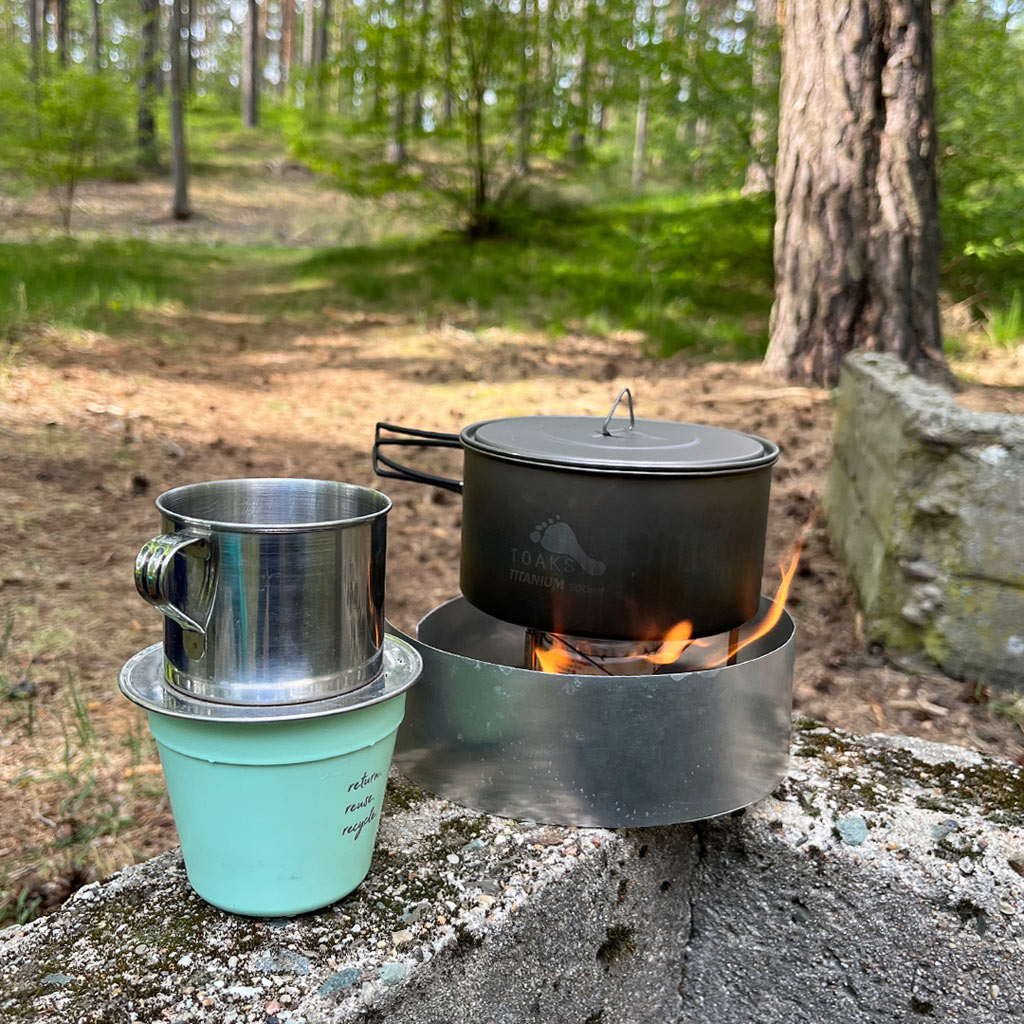
pot stand and wind screen
For cooking, and especially for stirring food in a pot, a stable pot stand is necessary. There are many DIY constructions and commercial designs available.
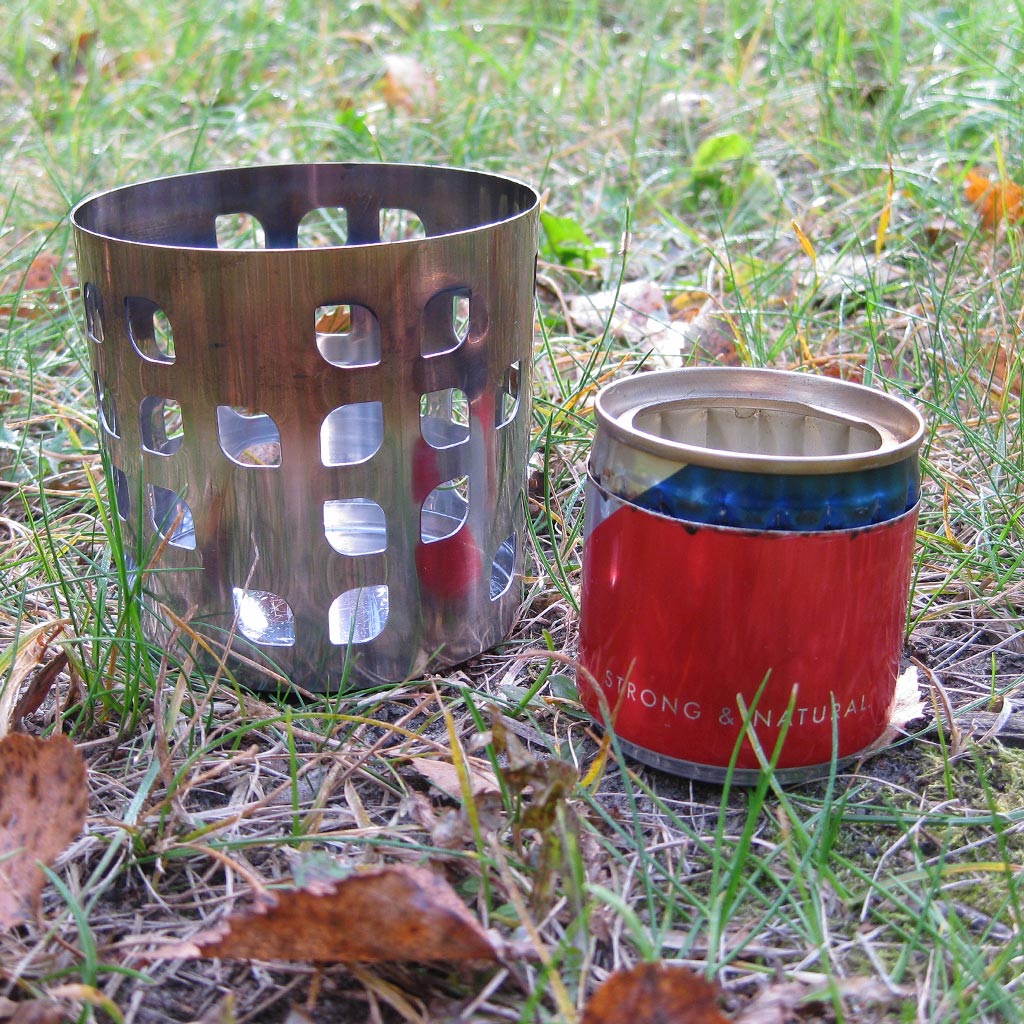
The small Ikea Vackert candle holder (discontinued), made from stainless steel, is a sturdy option. It works with both homemade and commercial spirit stoves like the Trangia spirit burner.
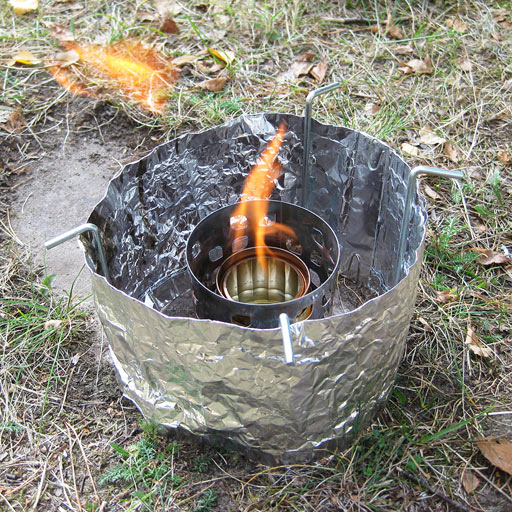
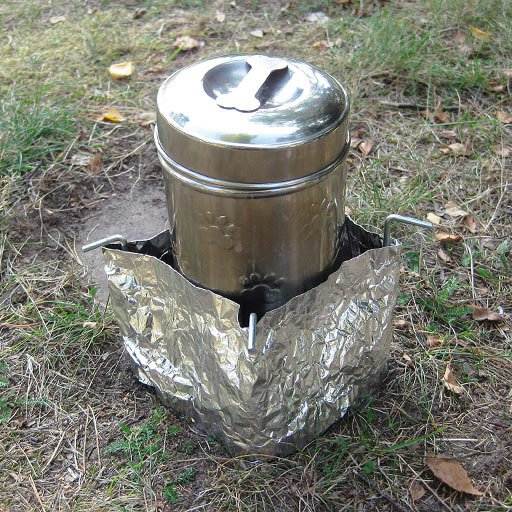
In windy conditions a wind screen helps retain the heat around the cook pot. This will decrease fuel consumption and boil time. A simple windscreen can be cobbled together from a piece of aluminum foil and two paper clips. This windscreen can be staked out with some tent pegs.
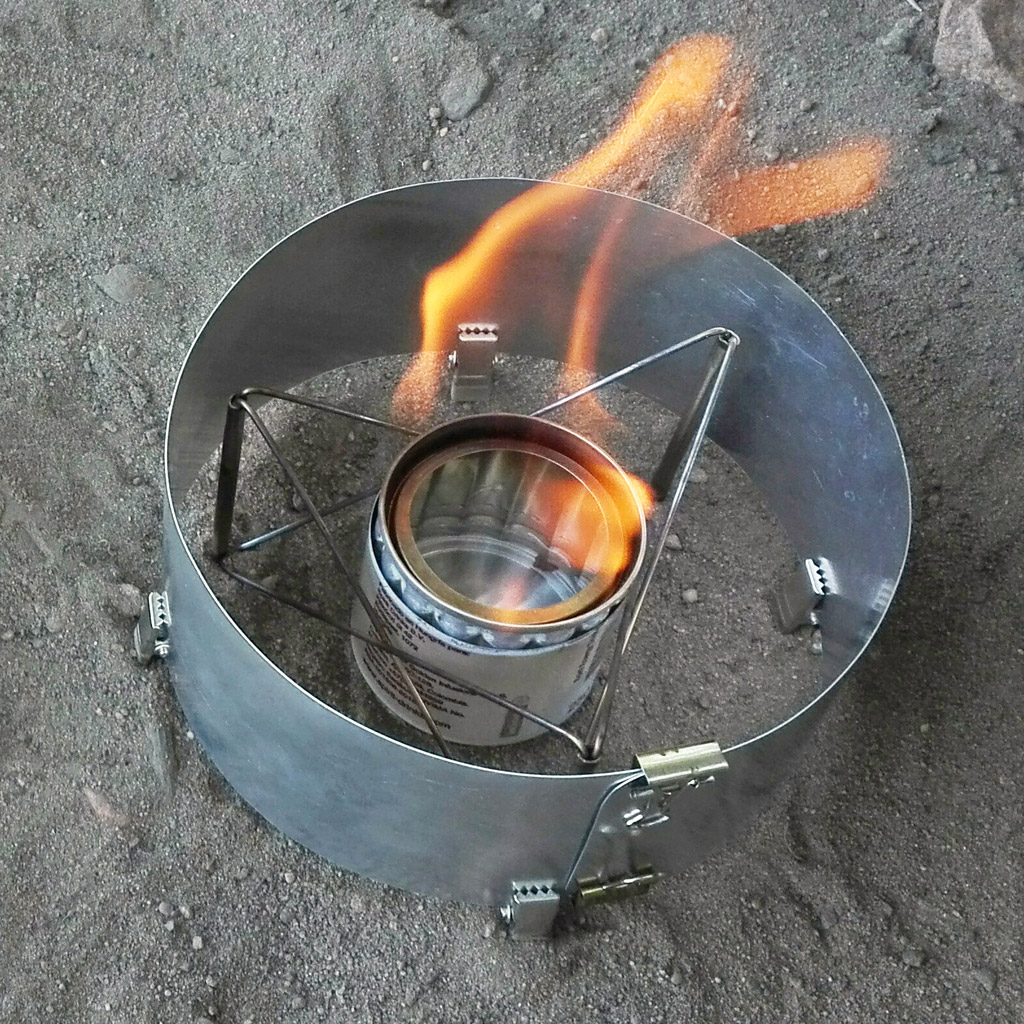
This is the most leightweight and robust windscreen and potstand I have built to date. It all can be stored inside my cooking pot.
camping pot
A stainless steel canister works well as a simple and robust cooking pot.
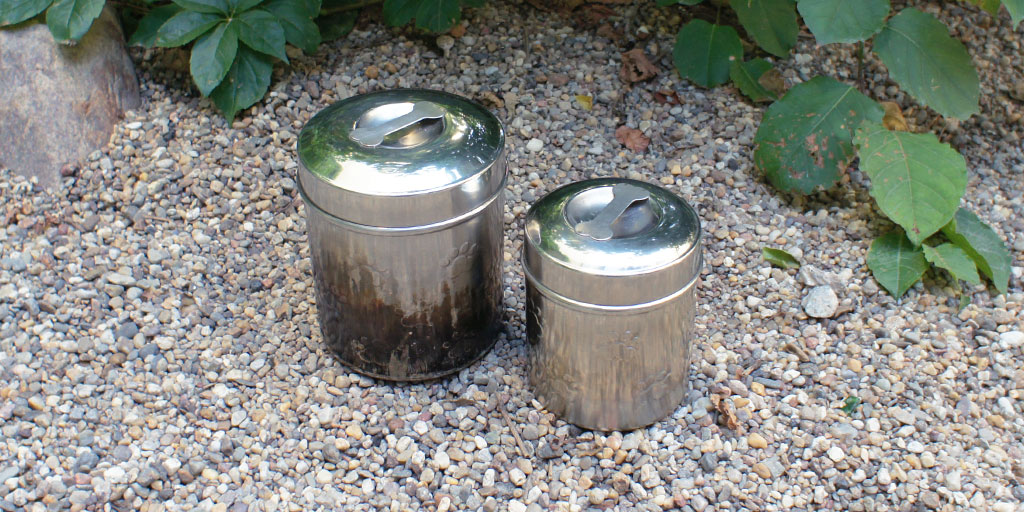
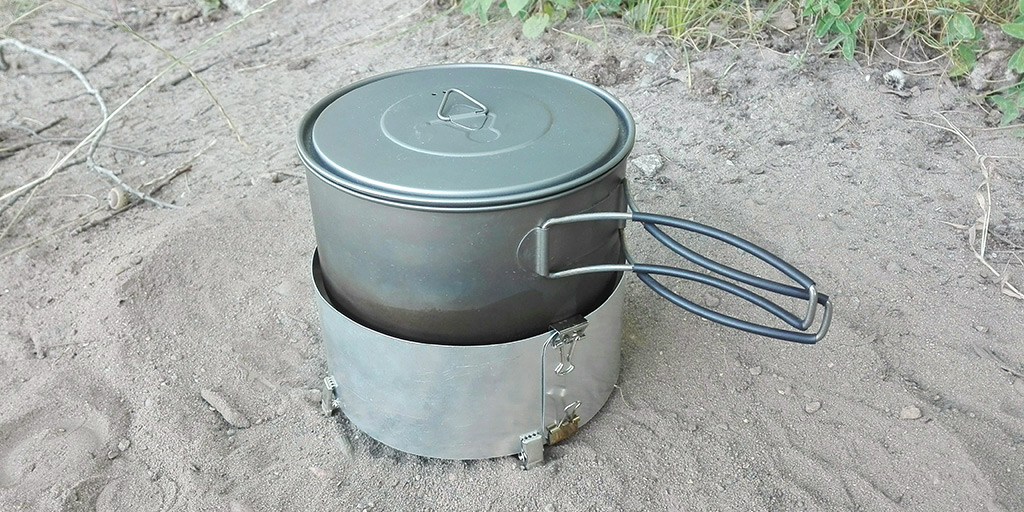
Backpacking cookware made from titanium is the most lightweight option.
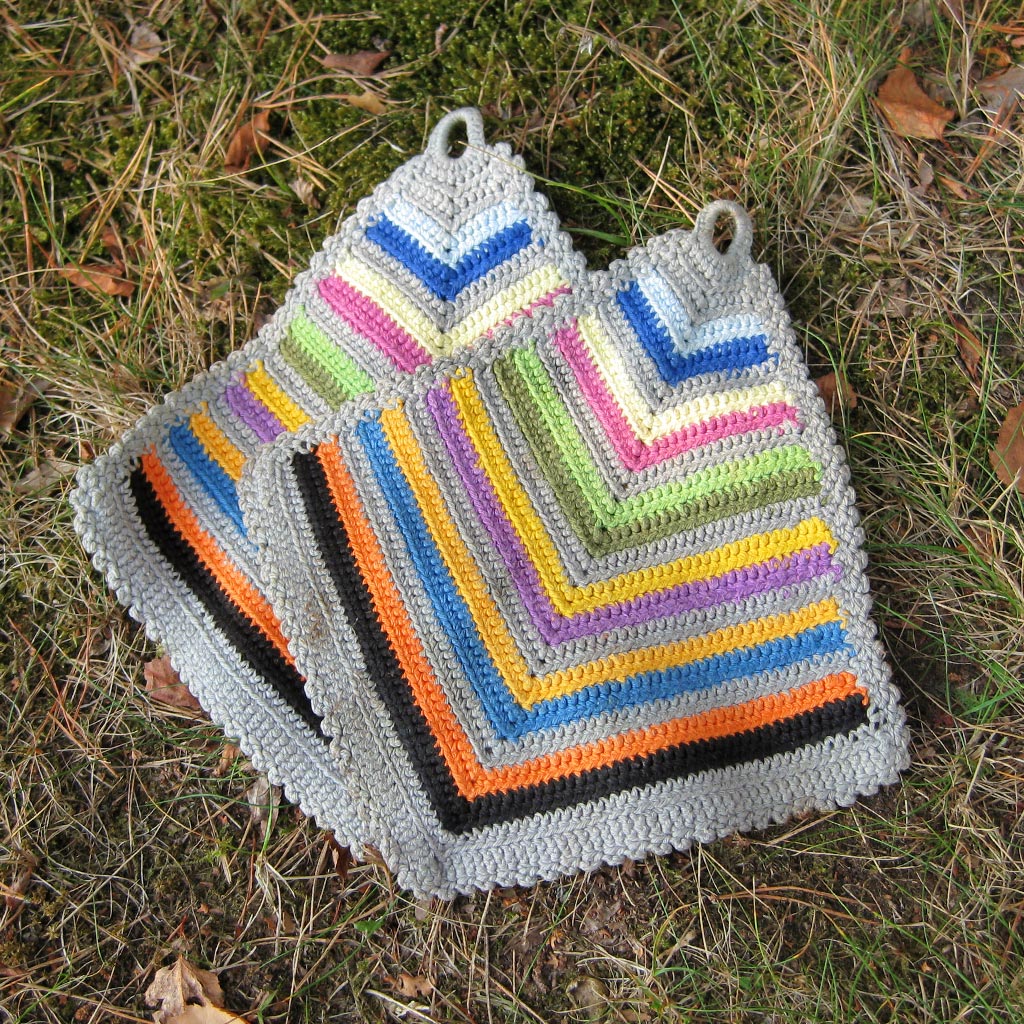
potholders
Small pot holders (made of cotton) are worth the extra weight! Once you've burned your fingers, dropped the pot and food on the ground, you'll know why these things are worth carrying.
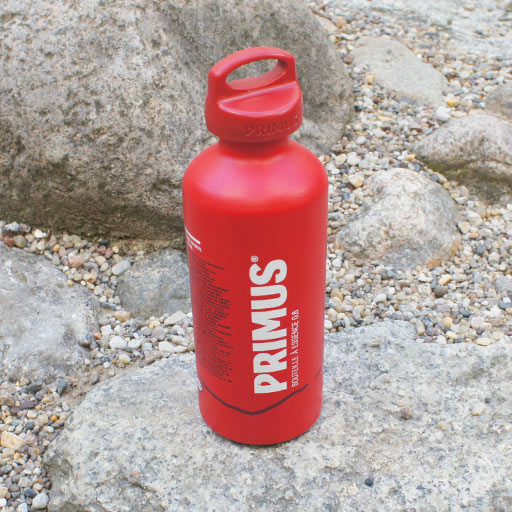

fuel bottle
Fuel should be stored in a dedicated fuel bottle. The size of the bottle depends on the amount of fuel you need for the length of your trip. The cap of the bottle should be leakproof. A disinfection bottle equipped with a childproof cap works great.
Make sure that even in low light conditions, especially at dusk, in darkness or at night, the fuel bottle can always be distinguished from your water bottle! An accidental sip of undiluted ethanol or denatured alcohol is unpleasant and unhealthy.
cold soaking
A good way to cut down cooking time, and thus save fuel, is to soak dried or dehydrated food in cold water. Put the food in a container with a screw top – something like an empty peanut butter jar – and soak it in half the water needed for preparation. Put it in your backpack and let it steep while you are out on the trail. Add the rest of the water when you have set up camp. Boil it and et voilà – McTrail Fast Food! During a heavy downpour, a heat wave or at the end of an exhausting day, pre-soaked food can be eaten cold.

Happy camping, safe cooking and Bon Appétit!
Disclaimer: Use this alcohol stove at your own risk! Handle and use your stove and flammable substances safely. Use caution and common sense. If you do not understand these instructions, have a tendency to hurt yourself, are prone to accidents or repeatedly damage things, than don't try this at home or outdoors ! Hands off !
Please send me an email if you do have a question:
team ⓐ heldenstuff . red
(anti spam bot e-mail address. copy & paste won't work. type it in.)
Download: Gebrauchsanweisung / safety tips (in English and German)




